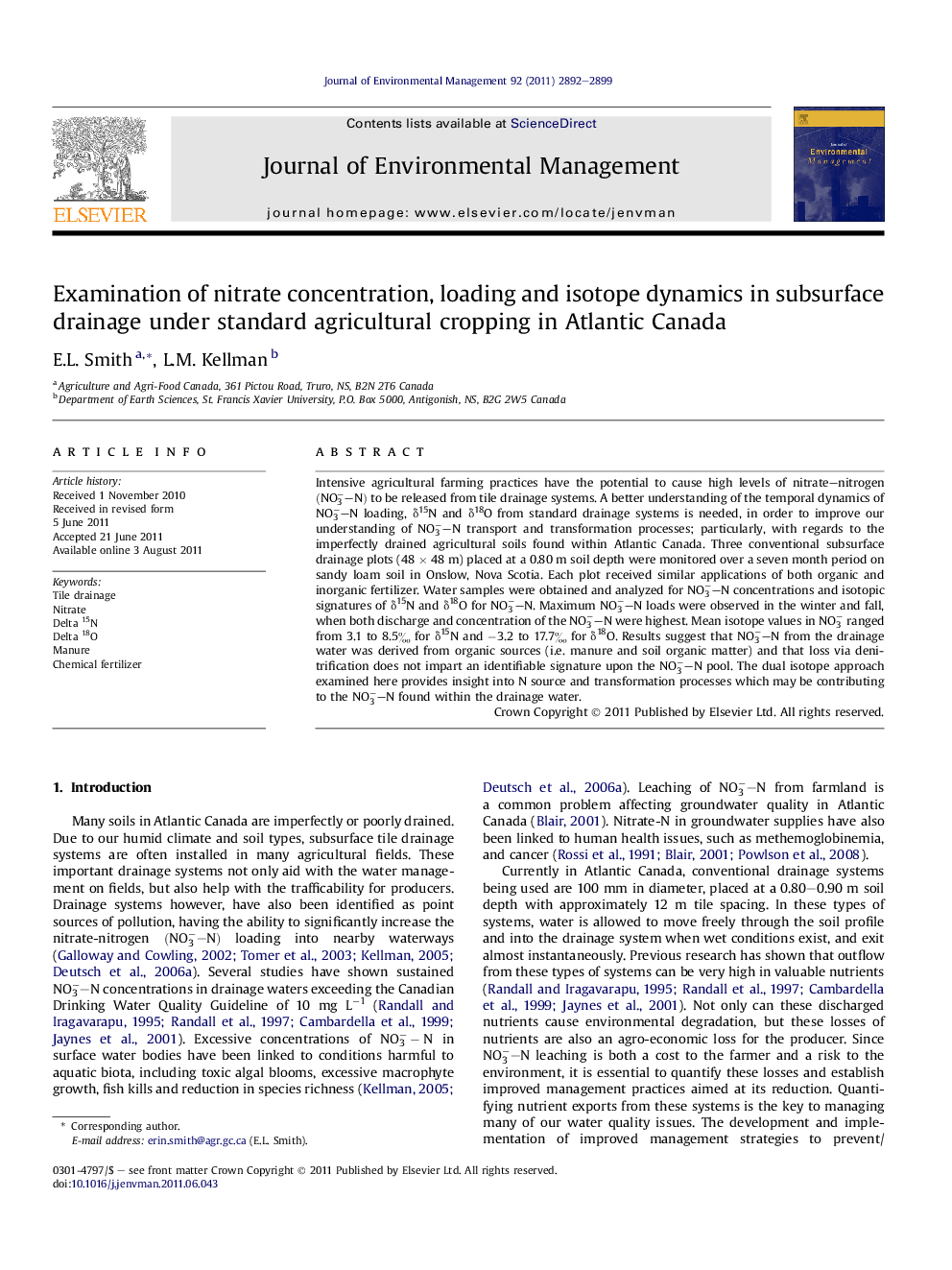| Article ID | Journal | Published Year | Pages | File Type |
|---|---|---|---|---|
| 1057221 | Journal of Environmental Management | 2011 | 8 Pages |
Intensive agricultural farming practices have the potential to cause high levels of nitrate–nitrogen (NO3−–N) to be released from tile drainage systems. A better understanding of the temporal dynamics of NO3−–N loading, δ15N and δ18O from standard drainage systems is needed, in order to improve our understanding of NO3−–N transport and transformation processes; particularly, with regards to the imperfectly drained agricultural soils found within Atlantic Canada. Three conventional subsurface drainage plots (48 × 48 m) placed at a 0.80 m soil depth were monitored over a seven month period on sandy loam soil in Onslow, Nova Scotia. Each plot received similar applications of both organic and inorganic fertilizer. Water samples were obtained and analyzed for NO3−–N concentrations and isotopic signatures of δ15N and δ18O for NO3−–N. Maximum NO3−–N loads were observed in the winter and fall, when both discharge and concentration of the NO3−–N were highest. Mean isotope values in NO3− ranged from 3.1 to 8.5‰ for δ15N and −3.2 to 17.7‰ for δ18O. Results suggest that NO3−–N from the drainage water was derived from organic sources (i.e. manure and soil organic matter) and that loss via denitrification does not impart an identifiable signature upon the NO3−–N pool. The dual isotope approach examined here provides insight into N source and transformation processes which may be contributing to the NO3−–N found within the drainage water.
► The dual isotope approach identified transformation processes contributing to the nitrate found. ► Nitrate was derived from organic sources (i.e. manure and soil organic matter). ► Denitrification did not impart an identifiable signature upon the nitrate pool. ► Mineralization was continuous through all seasons.
